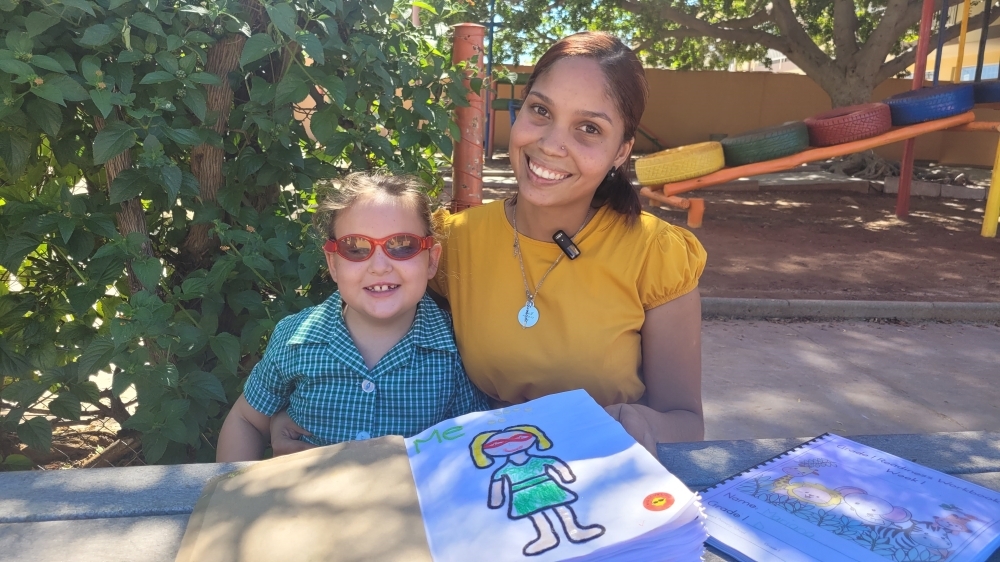Breaking barriers
No odds shall prosper
A visually-impaired learner has reached grade one in a mainstream school.
Mariana Grobler was diagnosed with Peters Anomaly Syndrome, which rendered her legally blind. But that has not stopped her from finishing her pre-primary at Pionierspark Primary School, affectionately known as 'Parkies'.She started grade one in January, and so far, her teachers and support system are immensely proud of her.
Grobler's teacher at Parkies, Helen Heydenrych, said she is proud of her and what she has accomplished so far.
“I think it’s a blessing working with Mariana. What she has achieved and how she handles the children is amazing,” the teacher said, adding that she treats Grobler the same as all the other learners in her class and not like someone with a disability.
“All the children are really helpful and they fight to help her. Like taking her to the toilet,” Heydenrych said about Grobler's peers are towards her.
After working as a teacher for 38 years, this is the first time Heydenrych has taught a visually-impaired learner. She said her experience with a visually-impaired teacher in her past has somewhat prepared her for Grobler.
“I had to retire this year, but decided to stay for her,” she said. “This is the first time I have a child like her in class but if she did not have a tutor, it would have been much more difficult for me as a teacher. If there are more tutors, training and equipment, then there are opportunities for other learners with a disability to go to a mainstream school,” Heydenrych said.
Grobler does everything other learners do, but the only difference is her activities, which differ slightly. Her workbook consists of wool-lined images and buttons used as braille numbers. By feeling the wool, she knows where her boundaries are for colouring. She has to do her alphabet differently, but she does most of her work the same.
When visiting the school, her tutor paged through her workbook as she felt her way through every page, following the conversation diligently and participating where she could.
“I don’t struggle with Mariana. She does very well and is very bright,” tutor Talisa Petha said. The lesson plan stays the same when it is created for the class, however Petha creates Grobler's work ahead of time to line everything with wool and to make her activities more stimulating.
The ministry of education, arts and culture appointed Petha to help and tutor Grobler.
“They gave the braille material for the school and will be giving training to all the teachers who will be working with Mariana,” the tutor said, adding that the school and her support system would like to support her to become self-reliant and to continue at a mainstream school.
Susan Grobler, Mariana’s mother, approached the ministry to have her child enrolled at a mainstream school after receiving training in the Omaheke Region. “Mariana is making history,” she said, adding that the only issue they have are with Mariana’s hand and eye coordination, which is to be expected.
Mariana has been making the headlines as the miracle of Namibia since her birth in 2016 and has received various operations through community sponsorships in order to help her see again.
In 2016, she received her first operation from a renowned ophthalmologist and professor of ophthalmology from Rochester, New York, Dr James Aquavella. The doctor is the first trained cornea surgeon. He is the president of the Contact Lens Association of Ophthalmology and the director of the Eye Bank Association of America. Aquavella came to Namibia in 2017 to perform Mariana's second surgery, which helped her regained 20/20 vision in both her eyes, but she has since become blind again.
Mariana’s condition causes a clouding and thinning of her cornea that causes blurred vision, but in her case, it renders her completely blind.






Comments
My Zone
No comments have been left on this article